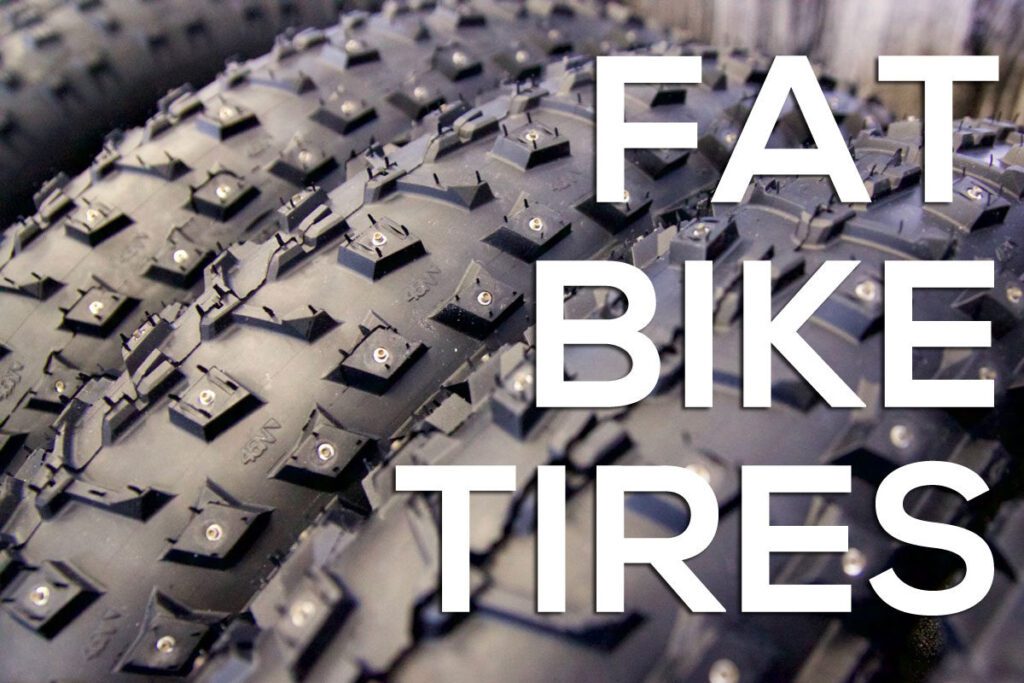


Best fat bike tires for pavement
Navigating the world of fat bike tires for pavement can be both exciting and daunting. Whether you’re a fat bike enthusiast looking to explore smoother surfaces or seeking a versatile option, finding the right tires is essential.
When it comes to riding fat bikes on pavement, selecting the right tires can significantly impact your overall experience. Fat bikes are renowned for their oversized, wide tires that are designed to handle rough terrains like sand, snow, and mud.
However, with the growing popularity of fat bikes for urban and pavement riding, manufacturers have developed specialized tires that offer optimal performance on smoother surfaces.
In this guide, we’ll delve into the top choices for the best fat bike tires that excel on pavement, ensuring an enjoyable and efficient riding experience. Let’s dive into the world of high-performance fat bike tires tailored for the urban terrain.
Read More: Is mountain biking good for long rides.
Key Considerations for Best Fat Bike Tires for Pavement:
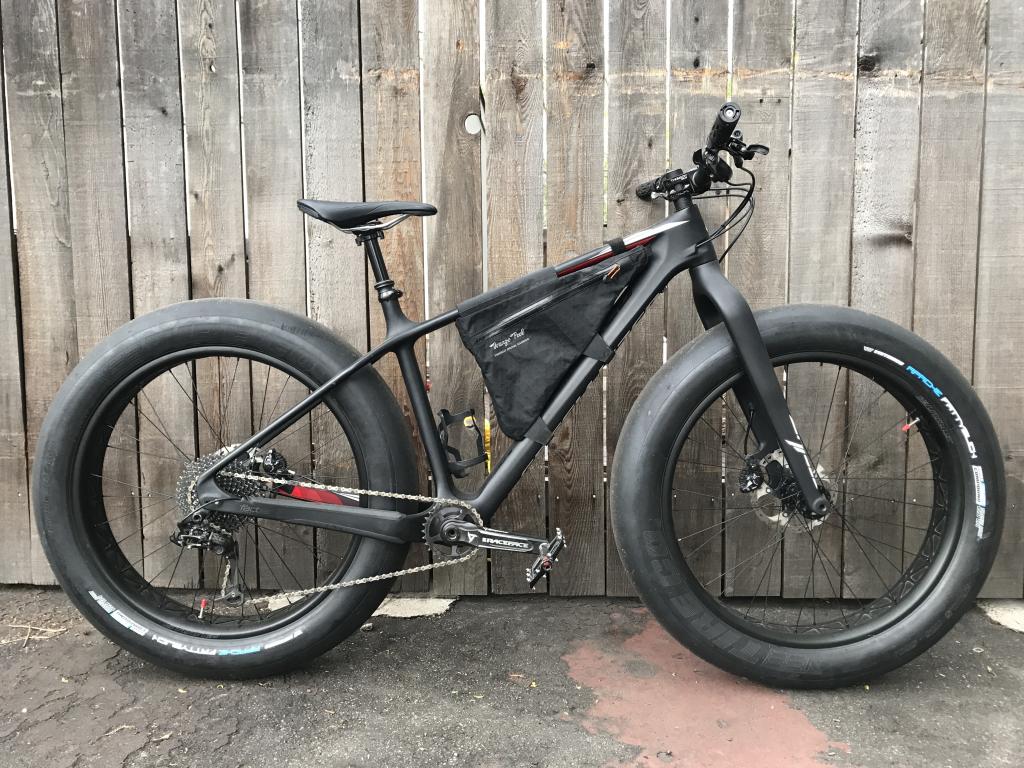


1. Tire Width:
While fat bike tires are generally wider than those of traditional bikes, choosing a slightly narrower tire with a smooth and flat tread pattern is ideal for pavement. This reduces rolling resistance and ensures a smoother ride.
2. Tread Design:
Look for tires with minimal tread patterns or slick designs. This maximizes contact with the pavement, providing better grip and efficiency while reducing vibration.
3. Rolling Resistance:
Tires with lower rolling resistance require less effort to maintain speed on pavement. This results in a more efficient and comfortable ride, especially during longer distances.
4. PSI (Pounds per Square Inch):
Adjusting tire pressure plays a crucial role in optimizing performance on pavement. Slightly higher tire pressure than usual helps reduce rolling resistance and enhance stability.
5. Size Compatibility:
Ensure the tire size is compatible with your fat bike’s rims. Many fat bike tires come in different diameters and widths, so choose a size that fits your bike’s specifications.
Read More : ” Top Five Electric Bikes “
Optimizing Pavement Performance



When it comes to riding a fat bike on pavement, achieving optimal performance and comfort requires the right choice of tires. Fat bikes are known for their versatility and ability to tackle various terrains, but not all tires are created equal.
Read More : ” Which Bike Gear For Uphill? “
To optimize pavement performance, it’s essential to consider specific features that enhance your riding experience on urban roads.
Tire Width and Contact Patch:
Selecting a fat bike tire with an appropriate width is crucial for pavement riding. Wider tires provide a larger contact patch, which translates to better stability, grip, and comfort on smooth surfaces.
While fat bike tires are inherently wider, choosing a size that balances cushioning with efficiency is key.
Tread Pattern:
Unlike traditional mountain bike tires designed for off-road use, fat bike tires for pavement typically have a smoother and less aggressive tread pattern. This design minimizes rolling resistance, allowing for easier and faster pedaling on city streets.
Rolling Resistance and Efficiency:
Fat bike tires designed for pavement prioritize lower rolling resistance. This means less effort is required to maintain speed, making your ride smoother and more energy-efficient.
A tire with reduced rolling resistance allows you to cover longer distances with less fatigue.
Puncture Protection:
When riding on pavement, encountering debris like glass or sharp objects is more common. Opting for fat bike tires with puncture-resistant technology can help prevent flats and ensure a worry-free ride.
Inflation Pressure:
Adjusting the tire’s inflation pressure is another factor that contributes to optimizing pavement performance. Finding the right balance between a firm and comfortable tire provides an efficient and smooth ride on city roads.
By considering these factors and selecting fat bike tires tailored for pavement, you’ll be able to enjoy a comfortable, efficient, and enjoyable riding experience whether you’re commuting, exploring the city, or simply cruising around town.
Tire Width and Its Impact



The width of a fat bike tire plays a significant role in determining its performance on pavement. When selecting the ideal tire width for riding on smooth surfaces, it’s important to strike a balance between comfort, stability, and efficiency.
Read More : ” How To Adjust Gear Shifter On Bike? “
Stability:
Wider fat bike tires offer increased stability on pavement. The larger contact patch provides better traction and grip, allowing you to maintain control while navigating turns and corners.
This stability is particularly important when riding at higher speeds on city streets.
Comfort:
A wider tire absorbs more road vibrations and shocks, resulting in a smoother and more comfortable ride. This is especially beneficial on pavement, where bumps and imperfections in the road can translate into discomfort for the rider.
A comfortable ride enhances your overall experience and reduces fatigue during longer rides.
Grip and Handling:
The wider surface area of a fat bike tire provides improved grip on pavement. This becomes particularly advantageous when making quick maneuvers or riding in wet conditions.
The enhanced grip ensures better handling and responsiveness, enhancing your confidence while riding.
Rolling Resistance:
While wider tires offer numerous benefits, they can also generate higher rolling resistance compared to narrower tires. This increased resistance can require more effort to maintain speed.
Therefore, it’s essential to find a tire width that balances stability and comfort without sacrificing efficiency.
Customization:
Fat bike tires come in various widths, allowing you to customize your bike’s performance based on your preferences and the type of pavement riding you plan to do.
Some riders may prefer slightly narrower tires for a more efficient ride, while others may prioritize maximum comfort and opt for wider tires.
In conclusion, when choosing fat bike tires for pavement riding, consider the impact of tire width on stability, comfort, grip, handling, and rolling resistance.
Finding the right balance between these factors will ensure an enjoyable and optimized riding experience on city streets and urban environments.
Tread Patterns for Pavement



When it comes to riding your fat bike on pavement, selecting the appropriate tread pattern is crucial for optimal performance, safety, and comfort.
Read More : ” Are All Mountain Bike Pedals The Same Size? “
Tread patterns influence how the tire interacts with the road surface, affecting factors like grip, rolling resistance, and overall handling.
Slick or Semi-Slick Tires:
These tread patterns feature minimal to no tread grooves, providing a large contact area with the pavement. Slick or semi-slick tires are ideal for smooth surfaces as they offer low rolling resistance, allowing for efficient and fast riding on roads and city streets.
They provide excellent traction on dry conditions but may be less suitable for wet or slippery surfaces.
Grooved Tires:
Tires with shallow grooves or minimal tread patterns offer a compromise between efficiency and grip. They can provide better handling and traction on wet roads while still maintaining relatively low rolling resistance.
Grooved tires are versatile options for urban riding, offering a balance between speed and control.
Hybrid Tires:
These tires feature a combination of slick and grooved sections, offering a versatile solution for both pavement and light off-road use.
The slick center section ensures efficient rolling on smooth surfaces, while the side knobs provide additional grip during turns or when encountering slightly rougher terrain.
Inverted Tread Patterns:
Some fat bike tires feature inverted tread patterns, where the center of the tire has a smoother surface, while the outer edges have more aggressive knobs.
This design optimizes rolling efficiency while maintaining cornering grip, making it suitable for riders who occasionally venture off-pavement.
Tire Width and Pressure:
In addition to tread patterns, consider adjusting tire width and pressure for pavement riding. Slightly higher tire pressure can reduce rolling resistance and improve efficiency on smooth surfaces, while still maintaining adequate grip and comfort.
Personal Riding Style:
Your riding style and preferences also play a role in selecting the right tread pattern. If you prioritize speed and efficiency, a slick or semi-slick pattern might be suitable.
For those who value versatility and occasional off-road excursions, a hybrid or grooved pattern could be the best choice.
In conclusion, choosing the right tread pattern for pavement riding involves assessing factors like rolling resistance, grip, and versatility.
Depending on your priorities and the type of urban cycling you plan to do, you can select a tread pattern that enhances your fat bike’s performance and ensures a smooth and enjoyable ride on city streets.
Rolling Resistance Matters
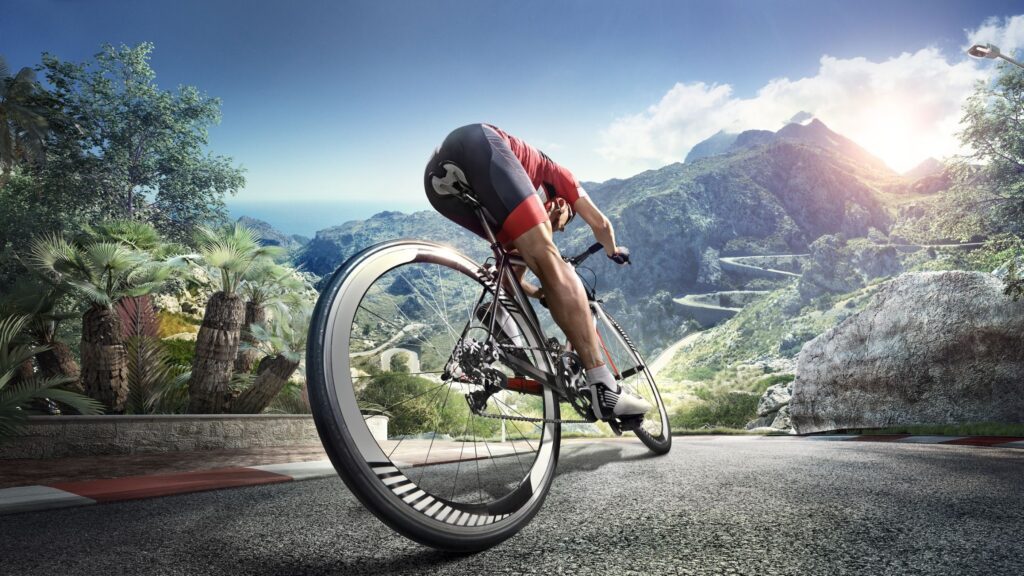


Rolling resistance is a critical factor to consider when selecting fat bike tires for pavement riding. It refers to the force required to keep a tire rolling forward on a flat surface.
The level of rolling resistance has a significant impact on your bike’s efficiency, speed, and overall riding experience on smooth roads and city streets.
Efficiency and Speed:
Tires with lower rolling resistance require less effort to maintain speed. This means you can pedal with greater ease and cover longer distances without exerting excessive energy.
When riding on pavement, minimizing rolling resistance allows you to glide effortlessly and maintain a consistent pace, making your ride more enjoyable.
Energy Conservation:
Fat bike tires with reduced rolling resistance translate to energy savings. With each pedal stroke, less energy is lost due to friction between the tire and the pavement.
This efficiency becomes particularly beneficial for longer rides, helping you conserve energy and sustain your stamina throughout your journey.
Acceleration and Responsiveness:
Tires with lower rolling resistance are more responsive to changes in pedaling effort and allow for quicker acceleration.
Whether you need to pick up speed from a standstill or maintain a fast pace, tires with minimal resistance ensure a snappy and responsive ride experience.
Reduced Fatigue:
Higher rolling resistance can lead to increased rider fatigue, especially during extended rides on pavement.
Tires that roll smoothly with minimal effort alleviate the strain on your muscles, reducing the likelihood of premature fatigue and ensuring a more comfortable and enjoyable ride.
Environmental Impact:
Lower rolling resistance not only benefits the rider but also has positive environmental implications.
By reducing the amount of energy needed to propel the bike forward, you contribute to a more eco-friendly mode of transportation, minimizing your carbon footprint.
Tire Construction and Tread Design:
Tire construction, materials, and tread design all influence rolling resistance. Slick or semi-slick tread patterns, as well as narrower tire widths, typically result in lower rolling resistance.
Additionally, maintaining appropriate tire pressure is crucial; underinflated tires can increase rolling resistance.
Balancing Grip and Efficiency:
While reducing rolling resistance is essential for pavement riding, it’s important to find a balance between efficiency and grip.
Some tread patterns compromise on rolling resistance for improved traction, making them suitable for riders who occasionally transition to off-road trails.
In conclusion, understanding the concept of rolling resistance is key to selecting the right fat bike tires for pavement riding.
By prioritizing tires with lower rolling resistance, you enhance efficiency, speed, and overall riding comfort, ensuring a seamless and enjoyable experience as you cruise through urban landscapes.
Adjusting PSI for Pavement



Fine-tuning your fat bike’s tire pressure, often referred to as PSI (pounds per square inch), is a crucial step in optimizing your bike’s performance and comfort on pavement.
The right tire pressure can significantly impact your riding experience by affecting traction, rolling resistance, stability, and overall ride quality.
Traction and Control:
On pavement, excessive tire pressure can lead to reduced traction, causing the tires to skid or slip during cornering and braking. Conversely, insufficient tire pressure can result in a squishy feel and poor handling.
By adjusting the PSI to an appropriate level, you enhance grip and control, ensuring confident maneuverability on city streets.
Rolling Resistance:
The amount of tire deformation under load affects rolling resistance. Higher tire pressure reduces the contact area between the tire and the pavement, leading to improved rolling efficiency.
However, excessively high PSI can result in a harsh ride. Finding the right balance between low rolling resistance and a smooth ride is essential for pavement cycling.
Comfort and Absorption:
Lower tire pressure offers increased shock absorption, providing a more comfortable ride on uneven surfaces commonly encountered in urban environments.
It cushions the bike against road imperfections, reducing vibrations and minimizing fatigue during longer rides.
Tire Wear:
Proper tire pressure distribution also impacts tire wear. Overinflated tires tend to wear out more in the center, while underinflated tires wear more on the edges.
Adjusting the PSI according to manufacturer recommendations helps extend the lifespan of your fat bike tires.
Testing and Experimentation:
The ideal tire pressure varies depending on factors such as rider weight, tire width, and personal preference. Experiment with different PSI settings to find what suits your comfort and riding style.
Generally, a PSI range between 20 and 30 for fat bike tires is suitable for pavement, but adjustments may be needed based on individual factors.
Gauge and Monitoring:
Use a reliable pressure gauge to measure and adjust tire pressure accurately. Regularly check and maintain the PSI before each ride to ensure consistent performance.
Avoid relying solely on visual inspection, as tire pressure changes can be subtle but impactful.
Weather and Temperature:
Keep in mind that tire pressure can be affected by changes in temperature. Cooler temperatures can lead to decreased pressure, while warmer conditions can cause pressure to increase.
Adjust the PSI accordingly based on weather conditions to maintain optimal performance.
In conclusion, adjusting the PSI for pavement riding is essential for achieving the best balance between traction, rolling resistance, comfort, and control.
By finding the right tire pressure and periodically monitoring it, you enhance your fat bike’s performance, making your urban cycling adventures smoother and more enjoyable.
Size Compatibility
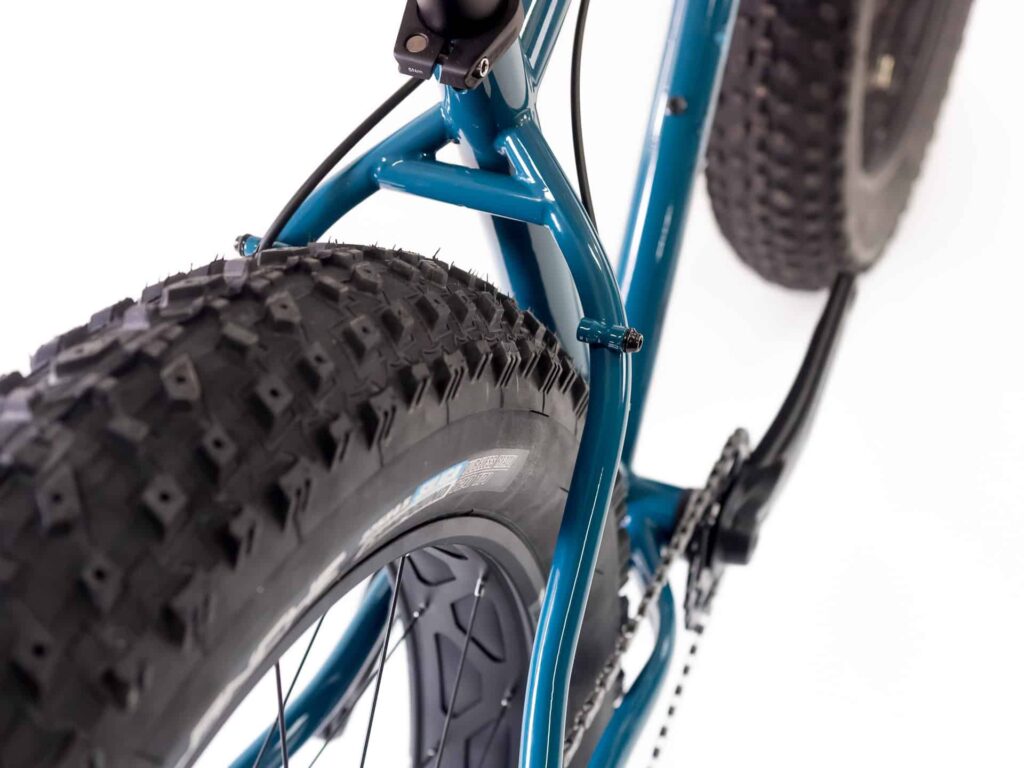


When it comes to optimizing fat bike tires for pavement riding, size compatibility plays a crucial role in determining your bike’s performance, comfort, and overall riding experience.
Selecting the appropriate tire size that suits both your fat bike’s specifications and the demands of pavement cycling is essential for a smooth and enjoyable ride.
Tire Width:
Fat bike tires are known for their wider profiles, designed to provide enhanced stability and traction on challenging terrains. However, on pavement, excessively wide tires can lead to increased rolling resistance and reduced efficiency.
Opt for narrower fat bike tire options that balance traction with improved rolling performance on smoother surfaces.
Rim Width:
The width of your bike’s rims directly influences the compatibility of tire sizes. It’s important to choose fat bike tires that match the rim width to ensure a secure fit.
Tires that are too wide for the rims may lead to an unstable ride, while tires that are too narrow can affect cornering and handling.
Clearance and Frame Design:
Check your fat bike’s frame clearance to determine the maximum tire size it can accommodate. Some fat bikes have limited space around the fork, seat stays, and chainstays, restricting the size of tires that can be installed.
Ensure that your chosen tire size provides ample clearance to prevent rubbing and interference during rides.
Aerodynamics:
While fat bike tires are designed for off-road adventures, on pavement, aerodynamics come into play. Larger and wider tires can create additional wind resistance, slowing down your pace and making pedaling more strenuous.
Opting for slightly narrower fat bike tires can help mitigate this effect.
Riding Style and Preference:
Consider your riding style and personal preferences when selecting fat bike tire sizes for pavement. If you value speed and efficiency, opting for a slightly narrower tire can enhance your performance.
On the other hand, if comfort and stability are your priorities, a wider tire may offer a smoother ride.
Manufacturer Recommendations:
Refer to your fat bike manufacturer’s recommendations and guidelines for tire sizes suitable for pavement riding. Manufacturers often provide specifications and recommended tire widths that are compatible with their bike models.
Experimentation:
The optimal tire size for pavement can vary based on factors like terrain, road conditions, and your individual preferences. Experiment with different tire sizes within the recommended range to find the best fit for your fat bike and pavement riding needs.
In conclusion, size compatibility is a critical factor when optimizing fat bike tires for pavement riding.
Choosing the right tire width that complements your fat bike’s rim width, frame clearance, and your personal preferences ensures a balanced and enjoyable experience on city streets.
With the right size, you’ll achieve a harmonious blend of traction, rolling efficiency, and stability for your urban cycling adventures.
Experience the Joy of Effortless Urban Riding



When it comes to urban riding, the right choice of fat bike tires can transform your experience from challenging to effortless, allowing you to enjoy the cityscape with comfort, efficiency, and a touch of adventure.
Here’s how optimizing fat bike tires for pavement can help you experience the joy of effortless urban riding:
Reduced Rolling Resistance:
Fat bike tires designed for pavement have a narrower profile and smoother tread pattern compared to their off-road counterparts. This reduction in rolling resistance translates to less effort required to pedal and maintain a consistent speed.
You’ll glide through urban streets with minimal resistance, making your ride feel smoother and more effortless.
Enhanced Efficiency:
The narrower width of pavement-friendly fat bike tires enables better contact with the road surface. This improved contact leads to better traction and grip, allowing you to efficiently accelerate, corner, and navigate through traffic.
Your energy is efficiently transferred into forward motion, making each pedal stroke count.
Improved Handling:
The optimized design of fat bike tires for pavement enhances your bike’s handling and responsiveness. With reduced tread block interference, you’ll experience more predictable and controlled steering.
This is especially important in urban environments where quick maneuvering and navigating obstacles are common.
Comfort and Stability:
While fat bike tires are known for their cushioning and shock-absorbing properties on rough terrain, they can also offer a comfortable and stable ride on city streets.
The slightly larger volume and lower tire pressure contribute to absorbing road vibrations, ensuring a more comfortable and enjoyable experience, even on less-than-perfect pavement.
Versatile Urban Exploration:
Optimized fat bike tires open up new possibilities for urban exploration. You can effortlessly transition from smooth roads to light trails, parks, or cobblestone streets without compromising performance.
This versatility allows you to enjoy the diverse landscape of the city and its surroundings.
Confidence and Fun:
The combination of reduced effort, improved handling, and enhanced comfort translates to increased confidence and a sense of fun during your urban rides.
You’ll have the freedom to navigate various routes and challenges with ease, turning your daily commute or leisurely ride into an enjoyable adventure.
Stylish Design:
Many fat bike tires designed for pavement come with sleek and stylish aesthetics that complement the urban environment.
The visual appeal of your optimized fat bike tires can add a touch of personality and flair to your ride, reflecting your unique style as you cruise through the city streets.
In conclusion, experiencing the joy of effortless urban riding with optimized fat bike tires is about finding the perfect balance between performance, comfort, and style.
By choosing tires specifically designed for pavement, you’ll enjoy the benefits of reduced rolling resistance, enhanced efficiency, improved handling, and the versatility to explore the city with confidence.
Embrace the excitement of effortless urban cycling and make your daily rides a delightful and satisfying experience.
Top Recommendations for Best Fat Bike Tires for Pavement
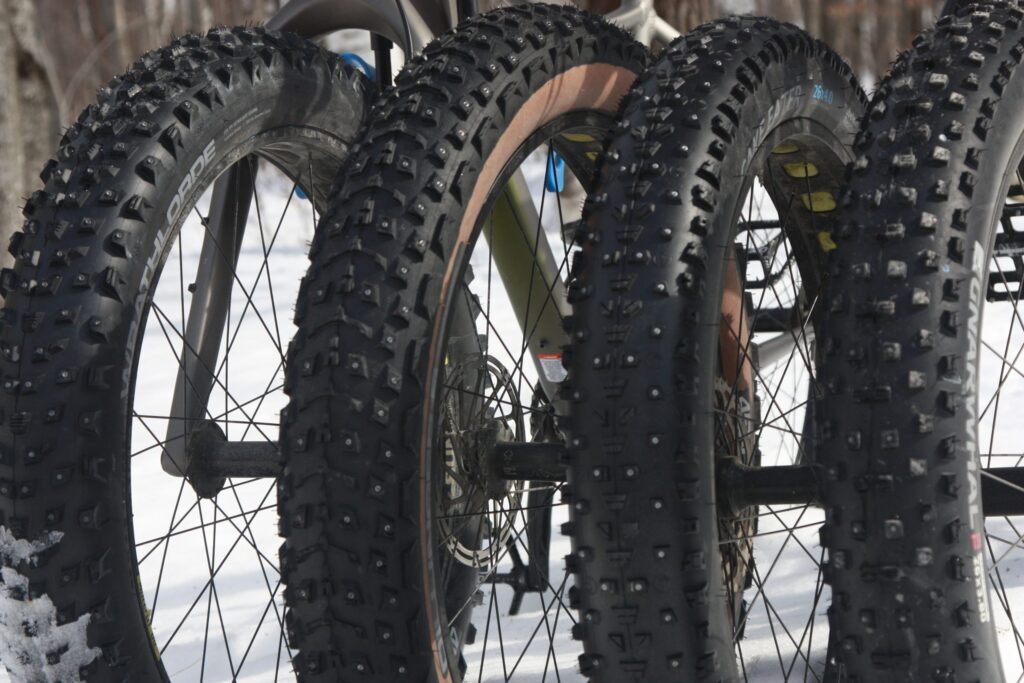


Schwalbe Jumbo Jim: This tire offers a balance between low rolling resistance and grip, making it suitable for both pavement and light off-road trails.
Maxxis Mammoth: Known for its fast-rolling capabilities, the Maxxis Mammoth provides excellent traction on pavement while maintaining versatility for various terrains.
Vee Tire Co. Mission Command: With a smooth center tread and slightly more aggressive side knobs, this tire strikes a good balance between pavement performance and off-road grip.
Surly Knard: The Surly Knard is designed with a smooth center and larger side knobs, offering a compromise between efficient pavement riding and confident cornering.
Terrene Cake Eater: This tire features a fast-rolling center tread combined with more substantial side lugs, making it well-suited for both urban commuting and light trail riding.
Conclusion
In the realm of urban cycling, the significance of choosing the best fat bike tires for pavement cannot be overstated.
These specialized tires have the power to redefine your riding experience, transforming mundane commutes into exciting adventures and leisurely spins into exhilarating journeys.
As you explore the diverse array of options available, from tire width and tread patterns to rolling resistance and compatibility, you’ll uncover the perfect blend of attributes that cater to your urban cycling needs.
The joy of gliding effortlessly through city streets, feeling the smooth connection with the pavement, and enjoying improved performance is within reach with the right choice of fat bike tires.
Whether you prioritize speed, grip, comfort, or style, the world of fat bike tires for pavement has something to offer. By making an informed decision based on your riding preferences, you can amplify the pleasure of urban cycling and elevate your overall biking experience.
So, as you embark on your next urban adventure, equipped with the best fat bike tires for pavement, remember that each pedal stroke is an opportunity to savor the fusion of technology, design, and performance.
Embrace the freedom, confidence, and excitement that these tires bring to your ride, and relish every moment of your urban cycling escapades.
FAQ’s
Are fat tire bikes good on pavement?
Yes, fat tire bikes can perform well on pavement. Their wide tires provide stability and comfort, but higher rolling resistance may affect speed compared to standard road bikes.
Are fat tires good for roads?
Yes, fat tires can work on roads, providing stability and traction. However, their increased rolling resistance may result in slightly slower speeds compared to traditional road bike tires.
What pressure should fat tires be for pavement?
For pavement, fat tire pressure typically ranges from 20 to 30 psi (pounds per square inch). Higher pressure offers less rolling resistance but may sacrifice some comfort.
How long do fat tires last on pavement?
The lifespan of fat tires on pavement depends on usage and maintenance. Generally, they can last thousands of miles if properly cared for, with regular checks for wear and tear.
Do fat bike tires slow you down?
Fat bike tires can increase rolling resistance on smooth surfaces like pavement, potentially slowing you down. Proper tire pressure and tread selection can minimize this effect for better performance.



Welcome to Bikegenics, where passion meets performance! We are a leading online destination for all things related to mountain biking, dedicated to providing you with top-notch gear, expert advice, and an immersive community to fuel your two-wheeled adventures. With a commitment to excellence and a deep love for the sport, we strive to elevate your biking experience to new heights.
